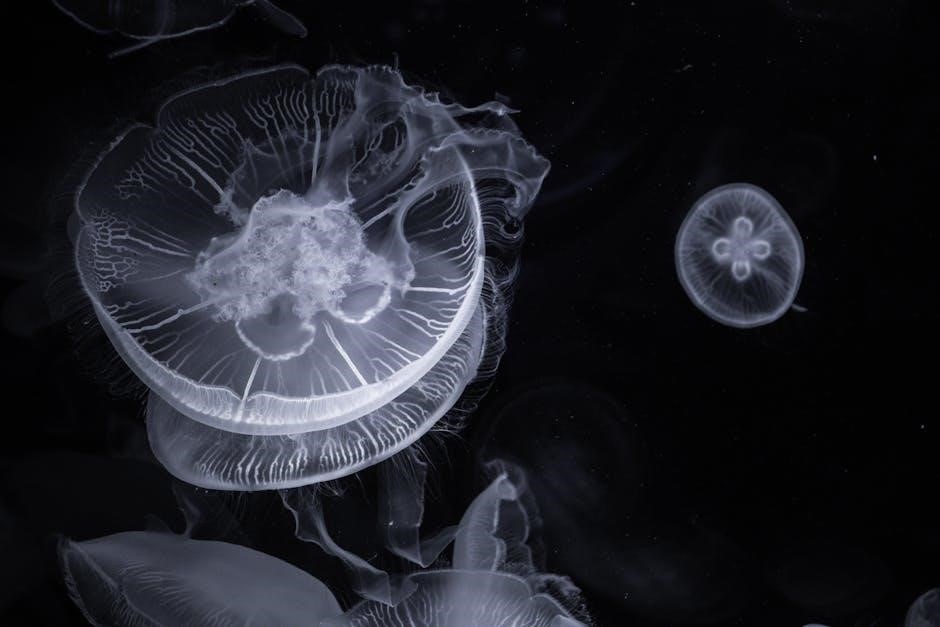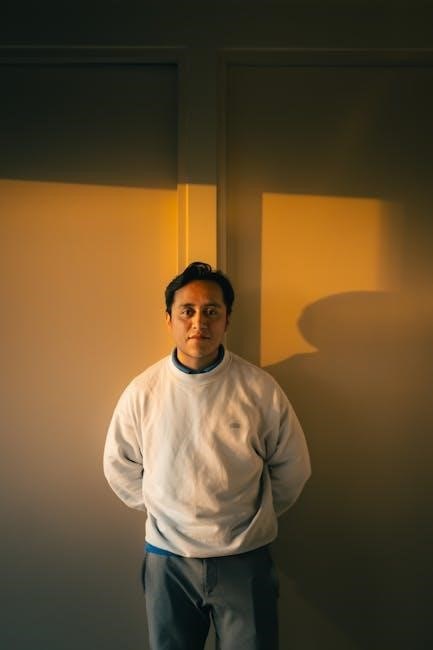
microneedling depth guide
Microneedling is a cosmetic procedure using fine needles to create micro-injuries, stimulating collagen production. Needle depth ranges from 0.25mm to 3.0mm, tailored to address various skin concerns such as acne scars, wrinkles, and hair growth, ensuring personalized treatment for optimal results.
Understanding Microneedling and Its Purpose
Microneedling is a minimally invasive cosmetic procedure that uses a device with fine needles to create micro-injuries in the skin. These tiny punctures stimulate the body’s natural healing process, promoting collagen production, which helps improve skin texture, reduce scars, and address signs of aging. The purpose of microneedling varies from enhancing product absorption to treating deeper concerns like acne scars and wrinkles. It is widely used for facial rejuvenation, beard growth, and scalp hair stimulation. By tailoring needle depth to individual skin goals, microneedling offers a customizable approach to achieving healthier, more radiant skin. Its popularity stems from its ability to deliver noticeable results with minimal downtime.
Why Needle Depth Matters in Microneedling
Needle depth in microneedling is crucial as it determines the treatment’s effectiveness and safety. Deeper depths target severe concerns like deep acne scars and wrinkles, while shallower depths focus on enhancing product absorption and improving skin texture. Incorrect depth can lead to complications, such as inflammation or inadequate results. For instance, depths of 0.5mm to 1.0mm are ideal for fine lines, while 1.5mm to 3.0mm is recommended for deep scars. Tailoring the depth to individual skin concerns ensures optimal outcomes. This customization highlights the importance of professional guidance to avoid risks and maximize benefits, making needle depth a critical factor in achieving desired results safely and effectively.

Optimal Depths for Common Skin Concerns
Microneedling depths vary based on skin concerns. Acne scars often require 1.0mm-1.5mm, while fine lines and wrinkles benefit from 0.5mm-1.0mm. Customizing depth enhances results and safety.
Acne Scars: Recommended Depths for Different Severity Levels
Microneedling depths for acne scars vary based on severity. Mild scars benefit from 0.5mm depth to stimulate collagen without over-aggravating the skin. Moderate scars require 1.0mm to address deeper tissue damage, while severe scars may need 1.5mm to penetrate deeper layers and promote significant collagen production. Deeper treatments are typically spaced 4-6 weeks apart to allow healing. A series of 3-6 sessions is often recommended for optimal results. It’s crucial to tailor depth to individual skin types and scar severity to avoid complications. Dermatologists often combine microneedling with other treatments for enhanced outcomes. Proper post-care is essential to minimize risks and ensure effective scar reduction. Professional guidance is key for safe and effective results.
Fine Lines and Wrinkles: Best Needle Depths for Anti-Aging
For addressing fine lines and wrinkles, microneedling depths typically range from 0.25mm to 0.75mm. Shallower depths, such as 0.25mm, are ideal for delicate areas like the under-eye region to gently stimulate collagen production. Moderate depths, around 0.5mm, are effective for deeper wrinkles and skin texture improvement. Depths of 0.75mm are often used for more pronounced lines, especially on the forehead and around the mouth. These depths create micro-injuries that trigger collagen synthesis, smoothing the skin and reducing the appearance of aging. Treatments are usually spaced 4-6 weeks apart, with a series of 3-6 sessions recommended for optimal anti-aging results. Professional guidance ensures safe and effective outcomes, tailoring the depth to individual skin needs.
Beard Growth and Scalp Hair: Ideal Microneedling Depths
Microneedling can enhance beard growth and scalp hair by stimulating blood flow and promoting hair follicle activity. For beard growth, depths of 0.5mm to 1.0mm are typically recommended, as they effectively target the dermal layer without causing excessive irritation. For scalp hair, slightly deeper depths of 0.75mm to 1.5mm are often used to penetrate thicker skin and address hair thinning or balding spots. These depths create micro-injuries that encourage collagen production and strengthen hair follicles. Treatments are usually spaced 4-6 weeks apart, with 3-6 sessions often needed for noticeable results. Consistency and proper aftercare are crucial to maximize outcomes and ensure safety.
Science Behind Microneedling Depth
Microneedling depth determines the extent of skin penetration, triggering controlled wound healing. Deeper needles stimulate collagen synthesis in the dermis, while shallower depths focus on epidermal renewal.

How Needle Depth Stimulates Collagen Production
Microneedling stimulates collagen production by creating controlled micro-injuries at specific skin depths. When needles penetrate the dermis, they trigger a wound-healing response, activating fibroblasts to produce collagen. Deeper depths (1.0mm-1.5mm) target the reticular dermis, where collagen fibers are densely packed, promoting significant anti-aging benefits. Shallower depths (0.25mm-0.5mm) focus on the papillary dermis, enhancing skin texture and brightness. The process induces collagen remodeling, strengthening the skin’s structural matrix. Over time, this leads to improved elasticity, reduced wrinkles, and a more youthful appearance. Balancing depth with individual skin needs ensures effective collagen stimulation without unnecessary damage.
The Role of Skin Thickness in Determining Depth
Skin thickness plays a crucial role in determining the appropriate microneedling depth. Thicker skin can tolerate deeper needle penetration (1.5mm-2.0mm), targeting deeper scar tissue or wrinkles. Thinner, delicate skin requires shallower depths (0.25mm-0.5mm) to avoid damage. Areas like the face vary in thickness, with the forehead and cheeks being thicker than the under-eye area. Understanding skin thickness ensures treatments are both safe and effective, avoiding over-penetration that could lead to complications. professionals often assess skin thickness during consultations to customize treatment plans, ensuring optimal results while minimizing risks. This personalized approach makes microneedling adaptable to diverse skin types and concerns.
Factors Influencing Needle Depth Selection
Several factors influence needle depth selection, including skin type, condition, thickness, and desired outcomes. These elements help customize treatments for individual needs and goals effectively.
Individual Skin Type and Condition
Individual skin type and condition significantly influence needle depth selection in microneedling. For sensitive or thin skin, shallower depths (0.25mm-0.5mm) are recommended to minimize irritation and risk of complications. Thicker or resilient skin may tolerate deeper depths (1.0mm-1.5mm) for more intense rejuvenation. Conditions like acne, rosacea, or scarring also play a role; for example, active acne may require superficial treatment to avoid aggravating breakouts, while deeper scars might need greater penetration. Skin elasticity, hydration levels, and pore size further guide depth choices. Customizing needle depth based on these factors ensures safer, more effective treatments tailored to personal dermatological needs and goals.

Desired Outcomes and Skin Goals
Desired Outcomes and Skin Goals
Desired outcomes and skin goals are crucial in determining the appropriate microneedling needle depth. For anti-aging and fine lines, shallower depths (0.25mm-0.5mm) are often sufficient to stimulate collagen production and improve texture. Deeper scars or stretch marks may require depths of 1.0mm-1.5mm to address the underlying tissue. Hyperpigmentation and uneven tone might benefit from mid-depth treatments (0.75mm-1.0mm) to promote even skin renewal. The goal of treatment—whether it’s rejuvenation, scar reduction, or pigment correction—dictates the intensity of the procedure. Tailoring needle depth to specific skin objectives ensures targeted results while minimizing unnecessary trauma to the skin. This personalized approach helps achieve the best possible outcomes for individual skin concerns and aesthetic ambitions.

Safety and Risks Associated with Needle Depth
Incorrect needle depth increases risks of bleeding, infection, and scarring. Deeper depths may cause prolonged downtime, while too shallow may be ineffective. Proper technique and professional guidance are essential for minimizing risks and ensuring safe, effective treatment outcomes.
Potential Risks of Using Incorrect Needle Depths
Using incorrect needle depths in microneedling can lead to serious complications. Depths that are too deep may cause excessive bleeding, permanent scarring, and prolonged recovery times. Conversely, depths that are too shallow may fail to stimulate collagen production, reducing the effectiveness of the treatment. Incorrect depths can also increase the risk of infection, especially if proper sanitization and aftercare are not followed. Additionally, improper depth selection may result in post-inflammatory hyperpigmentation (PIH), particularly in darker skin tones. To avoid these risks, it is crucial to tailor needle depth to individual skin concerns and thickness, ensuring safe and effective outcomes. Professional guidance is highly recommended to minimize potential complications.

Post-Treatment Care for Different Depths
Proper post-treatment care is essential for optimal results and minimal downtime after microneedling. For shallow depths (0.25-0.5mm), gentle cleansing with a fragrance-free cleanser and applying a soothing serum or hyaluronic acid is recommended. For medium depths (0.5-1.0mm), avoid makeup for 24-48 hours and refrain from active skincare ingredients like retinol or acids. Deeper treatments (1.0mm+) require extended care, including avoiding direct sun exposure, using broad-spectrum sunscreen, and maintaining hydration. Topical antibiotics or calming creams may be prescribed to reduce inflammation. It’s crucial to follow a skincare routine tailored to your treatment depth to promote healing and prevent complications. Always consult your practitioner for personalized aftercare instructions.
Choosing the Right Needle Depth for Your Needs
Choosing the right needle depth depends on your skin concern, skin type, and desired outcomes. Deeper depths target severe acne scars and wrinkles, while shallower depths suit sensitive skin and hair growth. Always consult a professional for personalized recommendations.
Starting with Shallower Depths (0.25mm-0.5mm)
Starting with shallower depths (0.25mm-0.5mm) is ideal for beginners or those with sensitive skin. These depths stimulate collagen production gently, improving skin texture and tone. They are perfect for addressing minor concerns like fine lines or hyperpigmentation. Shallower microneedling is also great for maintenance treatments or enhancing product absorption. It minimizes downtime, typically causing only mild redness that fades within hours. For scalp or beard growth, shallow depths are often recommended to promote hair follicle stimulation without discomfort. Always gradually increase depth as your skin tolerates the treatment. This approach ensures safety and effectiveness, making it a foundational step in your microneedling journey.
Progressing to Deeper Depths (1.0mm-1.5mm)
Progressing to deeper depths (1.0mm-1.5mm) is suitable for addressing more severe skin concerns, such as deep acne scars, pronounced wrinkles, or significant skin texture irregularities. These depths penetrate further into the dermis, stimulating robust collagen production and tissue remodeling. Deeper microneedling is often used by professionals for dramatic anti-aging results or scar reduction. However, it may require topical numbing to ensure comfort and involves longer downtime, typically 2-5 days of redness and sensitivity. Proper skin preparation and post-treatment care are crucial to minimize risks. Deeper treatments are best reserved for thicker skin types and should only be attempted once shallower depths are well-tolerated. Always consult a professional to determine the safest and most effective approach for your skin concerns.

Best Practices for Microneedling at Home
Sanitize your device, choose appropriate depths, and sanitize skin pre-treatment. Use gentle, consistent strokes, avoid sensitive areas, and follow a skincare routine post-treatment. Consult a professional for guidance.
Professional Guidance for Safe and Effective Results
Consulting a professional ensures personalized treatment plans tailored to your skin concerns and depth needs. Experts assess skin thickness, concern severity, and desired outcomes to recommend optimal depths. They use sterile equipment and precise techniques to minimize risks and enhance results. Professional guidance is crucial for deeper microneedling (1.0mm+), as improper use can lead to complications. They also provide post-treatment care instructions, reducing downtime and promoting healing. For best results, combine professional treatments with at-home microneedling, following their recommendations for depth and frequency. Regular follow-ups ensure progress and adjust treatments as needed, fostering safer and more effective outcomes.

Frequently Asked Questions About Microneedling Depth

- What is the best microneedling depth for my skin type?
- Can I use the same needle depth for my face and body?
- How often should I adjust needle depth for optimal results?
- Is deeper always better for scar reduction?
Common Misconceptions About Needle Depth
One common misconception is that deeper microneedling automatically yields better results, but this can lead to damage. Another myth is that the same depth works for all skin types, ignoring individual variations. Some believe needle depth is the only factor, but treatment frequency and post-care also play roles. Additionally, deeper depths aren’t always necessary for effectiveness, as shallower treatments can stimulate collagen without over-aggressiveness. Proper depth selection balances efficacy and safety, tailored to specific skin concerns and goals. Misconceptions highlight the importance of personalized approaches in microneedling treatments.

Realistic Expectations and Outcomes
Microneedling can significantly improve skin texture, reduce imperfections, and promote collagen production, but it’s important to set realistic expectations. Results vary based on skin type, condition, and treatment depth. For example, finer lines may show improvement after one session, while deeper scars or wrinkles may require multiple treatments. Outcomes are gradual, with noticeable changes emerging over weeks or months. Microneedling is not a quick fix but a process that requires patience. It’s also crucial to understand that results may differ from person to person, as individual responses to treatment vary. Managing expectations ensures satisfaction and helps align goals with achievable outcomes.